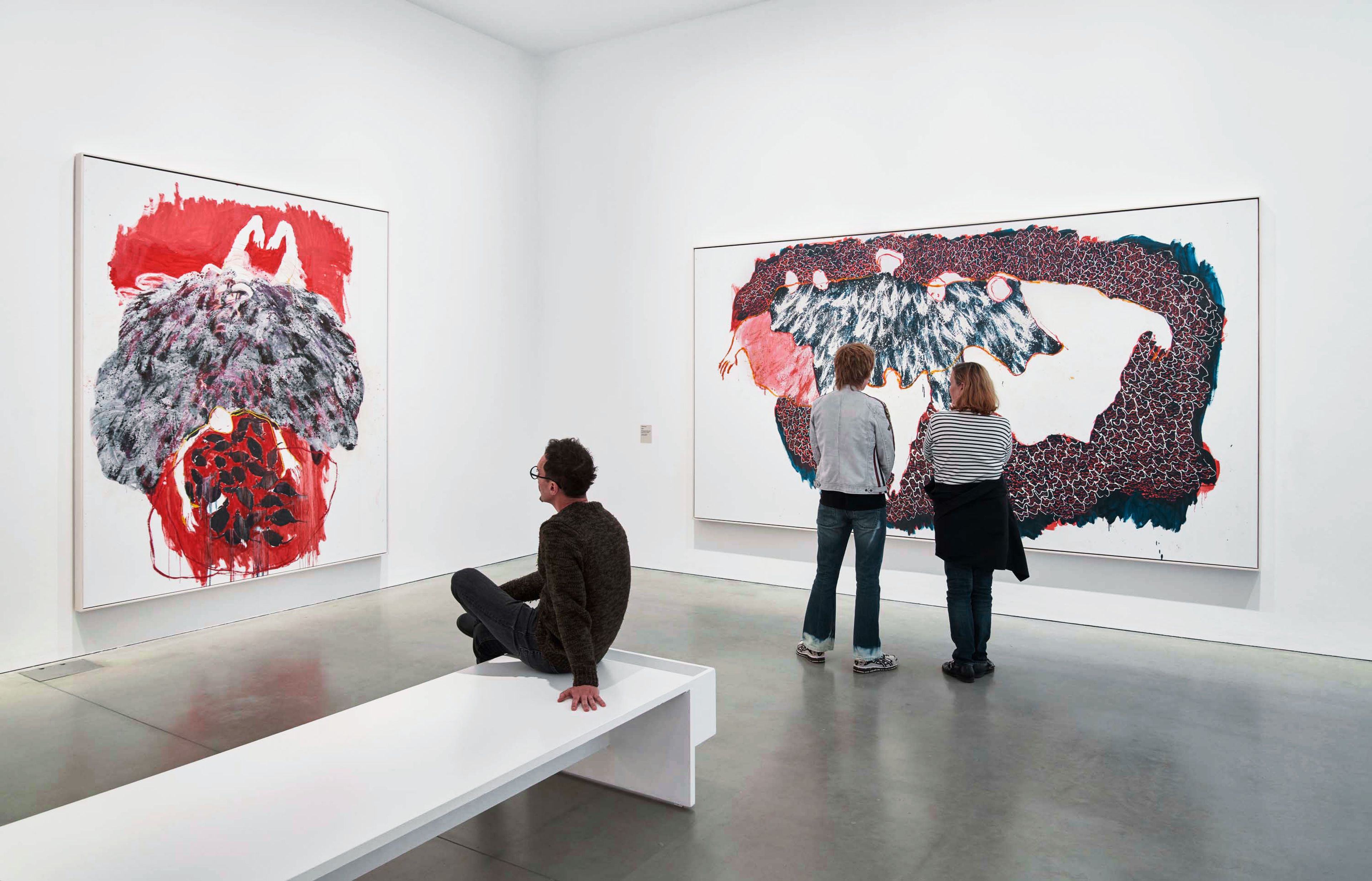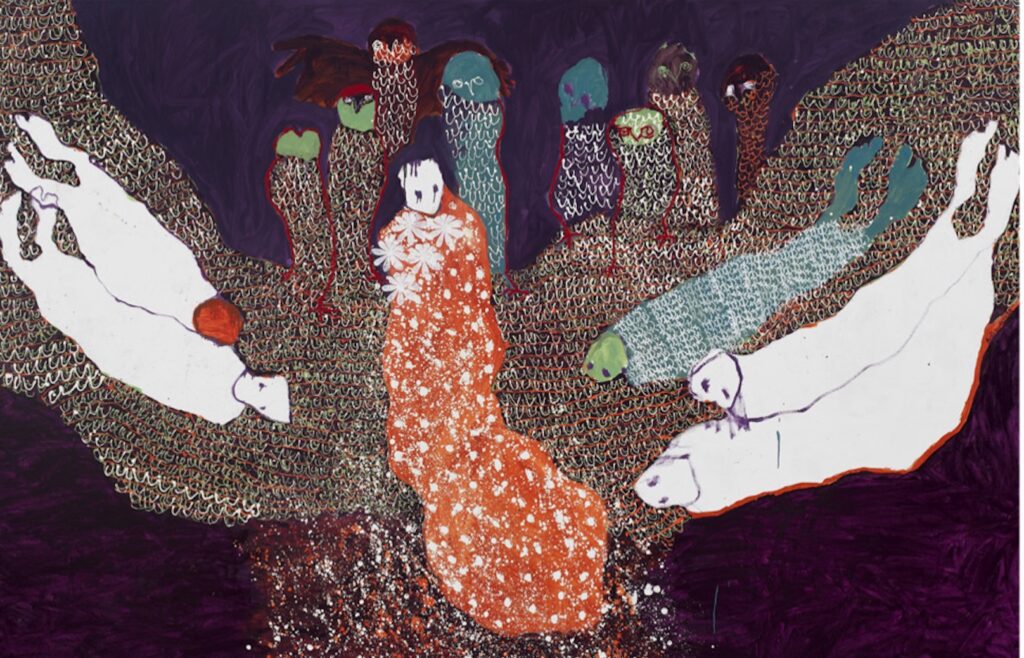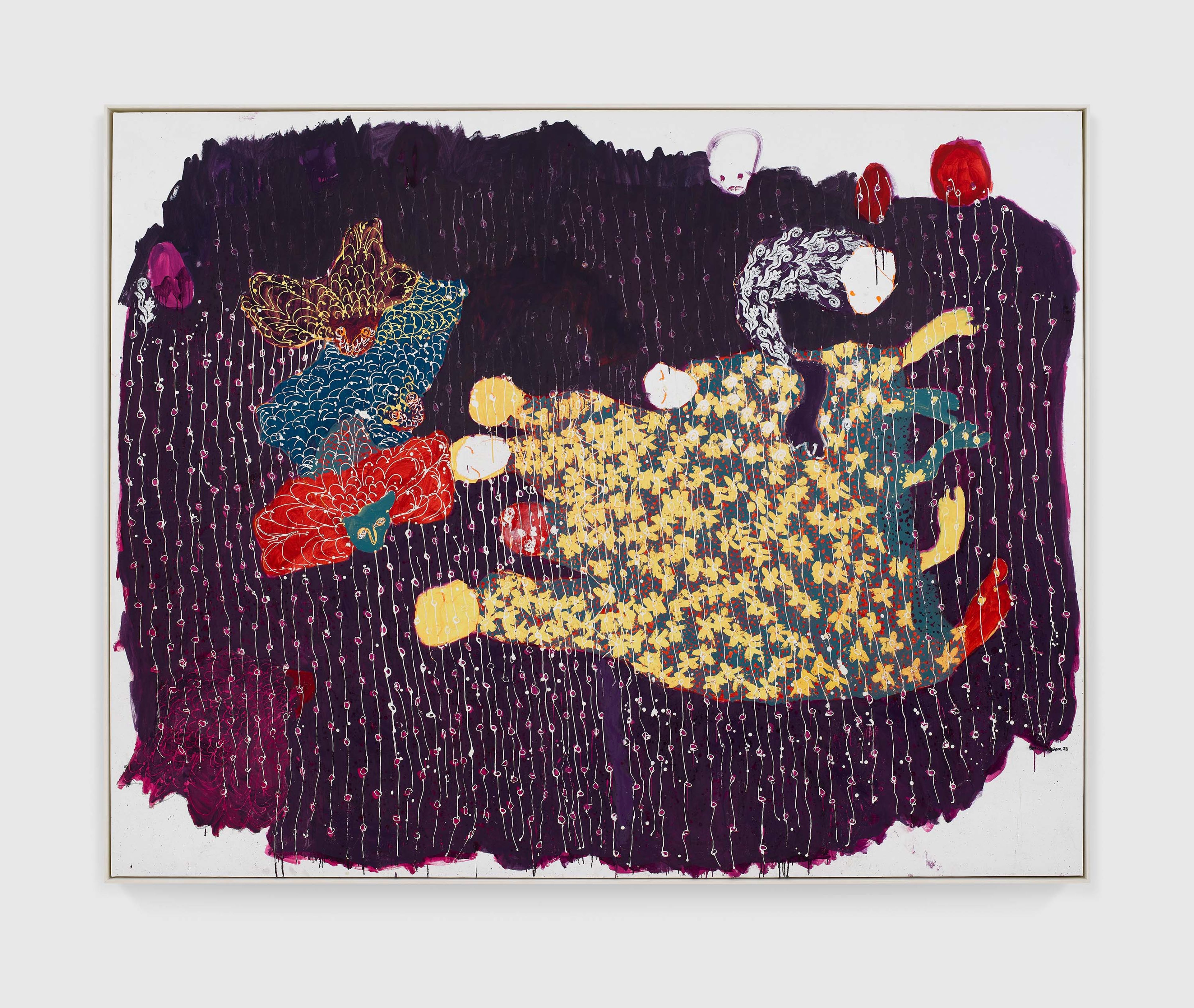Kettle’s Yard at the University of Cambridge presents Portia Zvavahera’s first solo exhibition at a public gallery in Europe. Drawing on Southern African culture, Christian iconography, traditional European painting, and African printmaking, this exhibition showcases new and recent paintings informed by the artist’s own dreams and the spiritual traditions she grew up with as a child. The exhibition, titled ‘Zvakazarurwa’, which is Shona for Revelations’, sees semi-autobiographical works use layers of color, texture and various artistic techniques including batik stenciling, block-printing, drawing and painting with ink. Presenting new and recent paintings, ‘Zvakazarurwa’ sees the artist’s innovative surfaces combine lino and cardboard printing, wax resist and oil bar drawing, fluid brushwork and washes of printer’s ink. The result produces a unique, multi-layered effect in which patterns, shapes and forms register worlds both real and imagined.

Zvavahera’s work is always autobiographical. Her own surrogate self appears alongside figures representing family members, apparitions and hybrid animal creatures informed by her dreams, as well as the spiritual and metaphysical traditions with which she was surrounded as a child. Working from her studio in Harare, Zimbabwe, the artist tells stories that are drawn from sleeping and waking life, creating works that are not illustrative, but rather repositories for visions and feelings associated with life and death, pain and pleasure, love, loss and connection.
The act of painting, which is closely tied to Zvavahera’s Christian beliefs and desire to comprehend the metaphysical through her dreams, involves working through the potential prophecies and messages they encode. The connections between conscious and unconscious states, and between painting and praying, have been key from the start of her career. ‘Zvakazarurwa’ consists of a selection of early works made between 2012-2016, which focus on the female body and its role in various rites of spiritual and secular passage such as: walking in wedding processions, kneeling in prayer as well as giving birth. ‘Labour Pains’ (2012) depicts a woman writhing in discomfort, her head arched back, her mouth agape and limbs askew. Similarly, ‘Labour Ward’ (2012) shows a group of vibrantly painted bodies, tightly packed together to propose childbirth as a collective endeavour. These scenes are shown alongside ‘His Presence’ (2013) and ‘Embraced and Protected in You’ (2016), one of Zvavahera’s larger works which suggests two female figures in the comforting company of a veiled entity.

The exhibition will continue with a pair of large paintings from 2022-2023 that explore a recurring dream in which rats, embodying harm and danger, need to be contained and withstood in order to protect herself and loved ones from harm. An example from this period, ‘Pane rima rakakomba [There’s too much darkness]’ (2023), created while the artist was pregnant, illustrates the ominous creatures from which she needed to protect her unborn child. The canvas is shown alongside a new work from 2024 showing a menacing picture of demonic, shape-shifting beings clawing after a woman in white. ‘Zvakazarurwa’ culminates in six large new works, all of which reference this nightmare, distilling it in layers of shape and form through patterns and motifs that have been pressed in lace, scraped in wax, washed in ink and delineated over huge colour-saturated expanses of canvas. Despite the beasts and spectres that populate these images, the exhibition is also be filled with angelic cyphers that promise both respite and triumph. For Zvavahera, the act of art making can help identify both warning signs and positive divinations, as suggested in a new painting in which five huddled siblings appear to float towards the heavens together.

‘Zvakazarurwa’ is organised by Kettle’s Yard, University of Cambridge, in collaboration with Fruitmarket, Edinburgh, where it will travel from the 1st of March until the 25th of May 2025. It is curated by Tamar Garb, Durning Lawrence Professor in History of Art at University College London. A new publication will accompany the exhibition, featuring an essay by Garb and a conversation between the curator and Sinazo Chiya, Tandazani Dhlakama and Pumla Gobodo-Madikizela. The exhibition will be open until the 16th of February at Kettle’s Yard, Cambridge, United Kingdom.


